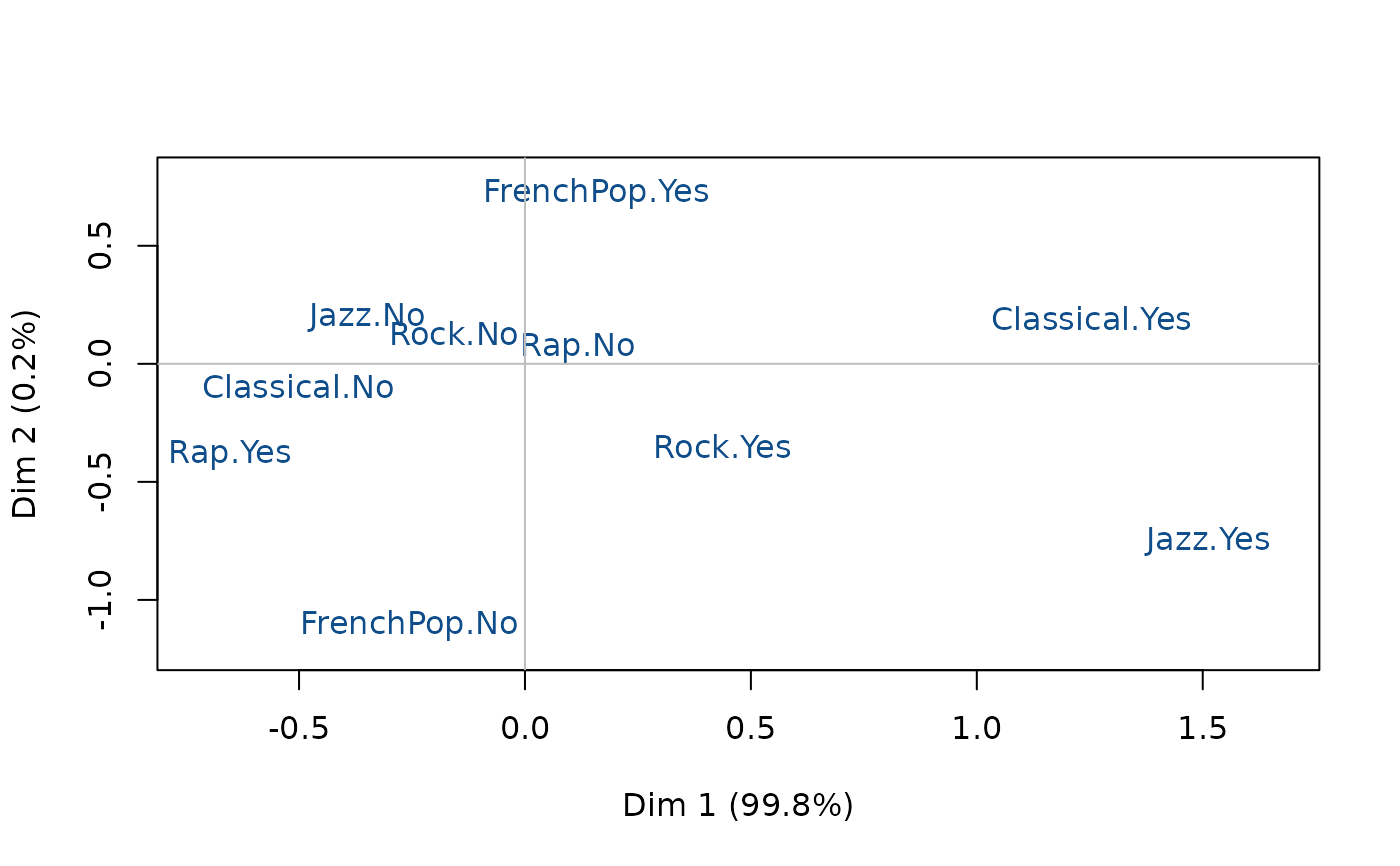Class Specific Analysis
csMCA.RdPerforms a "class specific"" Multiple Correspondence Analysis, i.e. a variant of MCA consisting in analyzing a subcloud of individuals.
Arguments
- data
data frame with n rows (individuals) and p columns (categorical variables)
- subcloud
a vector of logical values and length n. The subcloud of individuals analyzed with class specific MCA is made of the individuals with value
TRUE.- excl
nnumeric vector indicating the indexes of the "junk" categories (default is NULL). See
getindexcator useijunkinteractive function to identify these indexes. It may also be a character vector of junk categories, specified in the form "namevariable.namecategory" (for instance "gender.male").- ncp
number of dimensions kept in the results (default is 5)
- row.w
an optional numeric vector of row weights (by default, a vector of 1 for uniform row weights)
Details
This variant of MCA is used to study a subset of individuals with reference to the whole set of individuals, i.e. to determine the specific features of the subset. It consists in proceeding to the search of the principal axes of the subcloud associated with the subset of individuals (see references).
Value
An object of class csMCA, i.e. a list including:
- eig
a list of vectors containing all the eigenvalues, the percentage of variance, the cumulative percentage of variance, the modified rates and the cumulative modified rates
- call
a list with informations about input data
- ind
a list of matrices containing the results for the individuals (coordinates, contributions)
- var
a list of matrices containing all the results for the categories and variables (weights, coordinates, squared cosines, categories contributions to axes and cloud, test values (v.test), squared correlation ratio (eta2), variable contributions to axes and cloud
References
Le Roux B. and Rouanet H., Multiple Correspondence Analysis, SAGE, Series: Quantitative Applications in the Social Sciences, Volume 163, CA:Thousand Oaks (2010).
Le Roux B. and Rouanet H., Geometric Data Analysis: From Correspondence Analysis to Stuctured Data Analysis, Kluwer Academic Publishers, Dordrecht (June 2004).
